We use information collected through cookies and similar technologies to improve your experience on our site, analyze how you use it and for marketing purposes.
Your privacy settings
We and our partners use information collected through cookies and similar technologies to improve your experience on our site, analyze how you use it and for marketing purposes. Because we respect your right to privacy, you can choose not to allow some types of cookies. However, blocking some types of cookies may impact your experience of the site and the services we are able to offer. In some cases, data obtained from cookies is shared with third parties for analytics or marketing reasons. You can exercise your right to opt-out of that sharing at any time by disabling cookies.
Manage Consent Preferences
Necessary
Always ON
These cookies and scripts are necessary for the website to function and cannot be switched off. They are usually only set in response to actions made by you which amount to a request for services, such as setting your privacy preferences, logging in or filling in forms. You can set your browser to block oralert you about these cookies, but some parts of the site will not then work. These cookies do not store any personally identifiable information.
Analytics
These cookies and scripts allow us to count visits and traffic sources, so we can measure and improve the performance of our site. They help us know which pages are the most and least popular and see how visitors move around the site. All information these cookies collect is aggregated and therefore anonymous. If you do not allow these cookies and scripts, we will not know when you have visited our site.
Embedded Videos
These cookies and scripts may be set through our site by external video hosting services likeYouTube or Vimeo. They may be used to deliver video content on our website. It's possible for the video provider to build a profile of your interests and show you relevant adverts on this or other websites. They do not directly store personal information, but are based on uniquely identifying your browser and internet device. If you do not allow these cookies or scripts it is possible that embedded video will not function as expected.
Google Fonts
Google Fonts is a font embedding service library. Google Fonts are stored on Google's CDN. The Google Fonts API is designed to limit the collection, storage, and use of end-user data to only what is needed to serve fonts efficiently. Use of Google Fonts API is unauthenticated. No cookies are sent by website visitors to the Google Fonts API. Requests to the Google Fonts API are made to resource-specific domains, such as fonts.googleapis.com or fonts.gstatic.com. This means your font requests are separate from and don't contain any credentials you send to google.com while using other Google services that are authenticated, such as Gmail.
Marketing
These cookies and scripts may be set through our site by our advertising partners. They may be used by those companies to build a profile of your interests and show you relevant adverts on other sites. They do not store directly personal information, but are based on uniquely identifying your browser and internet device. If you do not allow these cookies and scripts, you will experience less targeted advertising.
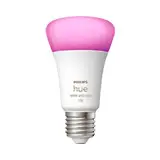
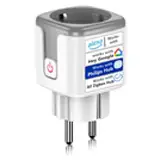
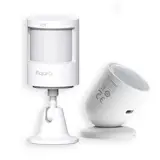
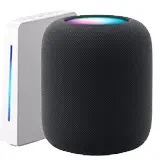
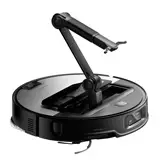

Office access control with smart locks
Tired of lost keys and outdated access systems? Your office security is crucial. And with today's technology, there's a smart solution! We're talking about access control with smart locks. They're safer, more efficient, and much more practical than traditional locks. Let's explore how they can transform the security of your workspace.
What are Smart Locks for Offices?
Smart locks are electronic access control systems. Instead of physical keys, they use digital credentials. These can be cards, PIN codes, biometric data (like fingerprints), or even your smartphone. They offer a much safer and more controlled way to manage who enters and leaves your office.
Types of Credentials Used
Advantages of Access Control with Smart Locks
The advantages are numerous. From increased security to more efficient personnel management. Let's look at some key benefits.
More safety
Smart locks are way harder to mess with than old-school locks. You can't pick 'em or make fake keys. Plus, they keep a good record of who's coming and going, so it's easier to figure things out if something goes wrong. A strong access control system deters intruders.
Total Access Control
You can define who has access to which areas of the office and at what times. For example, you can restrict access to certain areas to specific employees or allow access only during working hours. You can also revoke an employee's access instantly, which is crucial in the event of termination or lost credentials.
Detailed Activity Log
Smart locks log every entry and exit from the office. This provides a complete history of who's been where and when. This information can be valuable for personnel management, security, and incident investigations. A detailed record helps improve safety and efficiency.
Integration with Other Systems
Smart locks can integrate with other security systems, like alarms, surveillance cameras, and building management systems. This creates a comprehensive security system that fully protects your office. For example, you can set the system to trigger an alarm if unauthorized entry is detected.
Comfort and Flexibility
Forget about lost keys and changing locks. With smart locks, you can manage access remotely. You can grant temporary access to visitors, delivery people, or maintenance staff without giving them a physical key. Remote management saves time and effort.
How to Implement an Access Control System with Smart Locks
Implementing an access control system requires planning and care. Here are some key steps to ensure a successful implementation.
Needs Assessment
Before choosing a system, assess your office's specific needs. Consider the office size, number of employees, required security level, and available budget. Do you need to control access to all doors or just certain critical areas?
System Selection
Choose a system that fits your needs and budget. Consider the different credential types, security features, ease of use, and ability to integrate with other systems. Research and compare different options before making a decision.
Professional Installation
It's essential to use a professional installer to ensure the system is installed correctly and functions optimally. A professional installer can configure the system, connect the locks to the network, and provide staff training. A proper installation is key to safety.
Settings & Customization
Configure the system to fit your office's specific needs. Set up access permissions for each employee, establish access schedules, and configure notifications. Make sure the system is integrated with other security systems.
Staff Training
Train staff on how to use the access control system. Explain how to use credentials, how to access different office areas, and how to report any issues or problems. Training is essential to ensure the system is used correctly.
Best Practices for Smart Lock Security
Implementing an access control system is just the first step. To ensure long-term security, it's important to follow some best practices.
Keep the software updated.
Make sure your smart lock software is always up to date. Software updates often include security patches that fix vulnerabilities and protect the system against attacks. Updates are essential to maintain security.
Change Passwords Regularly
If you use PINs as credentials, change your passwords regularly. Use strong passwords that are hard to guess. Don't use default passwords or easily remembered passwords, like birthdays or names.
Monitor System Activity
Regularly monitor system activity to detect any suspicious activity. Review access logs to identify unusual patterns or unauthorized access. Proactive monitoring helps catch problems early.
Conduct Security Audits
Conduct regular security audits to assess the access control system's effectiveness. Identify potential vulnerabilities and take steps to fix them. Consider hiring a security expert to perform a comprehensive audit.
Have a contingency plan.
Have a backup plan in case the access control system fails. What will you do if the locks stop working due to a power outage or system failure? Make sure you have a backup solution, such as physical keys or a manual access system.
Examples of Companies Using Smart Locks
Many businesses are already taking advantage of the benefits of access control with smart locks. Here are some examples:
Smart Lock Implementation Costs
The cost of implementing an access control system with smart locks varies depending on the size of the office, the number of doors to be controlled, and the type of system chosen. Here are some factors that influence the cost:
It's important to get quotes from several suppliers before making a decision.
The Future of Office Access Control
The future of office access control is heading towards even smarter and more sophisticated systems. Integration with Artificial Intelligence (AI) and the Internet of Things (IoT) will allow for the creation of more personalized and automated security systems. We'll see:
Conclusion
Smart lock access control is a smart investment for any office. It offers increased security, total access control, detailed activity logs, integration with other systems, and convenience. While implementation requires planning and care, the long-term benefits far outweigh the costs. Embrace smart locks and protect your office smartly. Ready to take the leap into smart security? Share this article with your colleagues and start planning implementation in your office. Your team's safety and your facilities will thank you!
Related Posts
Smart security systems for businesses
Worried about your business's security? You don't have to lose sleep anymore! Smart security systems have arrived to revolutionize how we protect our businesses. Forget traditional alarms and welcome the era of proactive and intelligent security. What are Security Systems…
Meeting room automation: convenience and efficiency
Can you imagine entering a meeting room and everything is ready for you? Lights, projector, videoconferencing... Everything at the touch of a button! Meeting room automation is no longer science fiction. It is a reality that transforms the way we collaborate and optimizes our time. Why automate your meeting room? ...
Office lighting and climate automation
Imagine walking into your office. The lights gently turn on as you enter. The temperature is perfect, not too cold, not too hot. Everything is adjusted automatically. Sound like science fiction? Not at all! It's the automation of lighting and climate control in the office, and it's transforming the way we work. What is automation…
How to improve productivity with home automation
Can you imagine a world where your home helps you be more productive? Stop dreaming. Home automation is already here. It's not just about lights that turn on by themselves. We're talking about a system that optimizes your environment so you can focus and achieve more in less time. Forget about...